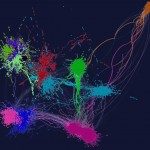Link to Pubmed [PMID] – 19281956
C. R. Biol. 2009 Feb-Mar;332(2-3):254-66
Segmental duplications (SDs) are a major element of eukaryotic genomes. Whereas their quantitative importance vary among lineages, SDs appear as a fundamental trait of the recent evolution of great-apes genomes. The chromosomal instability generated by these SDs has dramatic consequences both in generating a high level of polymorphisms among individuals and in originating numerous human pathogenic diseases. However, even though the importance of SDs has been increasingly recognized at the genomic level, some of the molecular pathways that lead to their formation remain obscure. Here we review recent evidences that the interplay between several mechanisms, some conservative, some based on replication, explains the complex SDs patterns observed in many genomes. Recent experimental studies have indeed partially unveiled some important aspects of these mechanisms, shedding interesting and unsuspected new lights on the dramatic plasticity of eukaryotic genomes.

